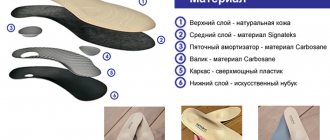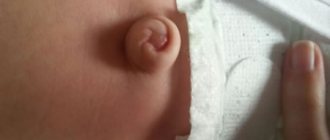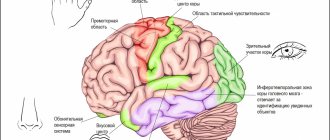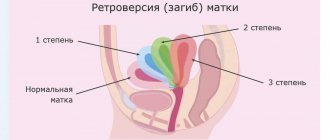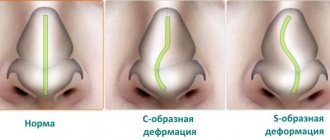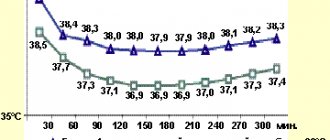About a century ago, people did not pay much attention to the health of teeth and treated them mainly on the basis of the fact: if something hurts, we try to heal it or pull it out, and if it doesn’t hurt, then we don’t touch it. Not much attention was paid to irregular teeth. But with the development of science, it became clear: dental defects require correction. Only the correct arrangement of teeth in the mouth protects a person from premature destruction of molars and incisors, overstrain of the facial muscles and nearby joints. But even now, not everyone understands what an incorrect bite leads to and what its danger is. Let's look at 19 of the most popular consequences that await owners of teeth with anomalies.
What is overbite
Bite is the relationship between the lower and upper dentitions with full closure and maximum contact. This is the first parameter that a competent orthodontist evaluates in a child or adult. Basic bite problems can be determined even by eye: the doctor just needs to ask the patient to clench his teeth.
There is a correct (normal, physiological) bite, in which the load on the teeth is uniform, and a pathological one. Malocclusion can develop at any age due to various factors. It greatly affects the body and general condition of a person.
Complications
When someone repeatedly bites their cheek, the area may appear thickened and paler than the surrounding tissue. Sometimes the affected area may be accompanied by purple spots. In more severe cases, dentists may notice tissue necrosis.
Patients who constantly bite their cheek may stop engaging in social activities to prevent other people from imitating their behavior. Some people may feel shame, isolation and low self-esteem due to their repetitive behavior, which can affect their overall well-being.
What kind of bite should a person have?
Physiological or normal occlusion has the following characteristics:
- all teeth of the upper and lower jaws are in contact with each other, with each tooth intersecting with two antagonists. The exception is the third upper molar and the first lower incisor;
- the midline of the face passes between the central incisors;
- there are no gaps between individual elements of the rows;
- The upper dental arch has the shape of a semi-ellipse, the lower - a parabola.
Correct bite on the sides and front
There are also several types of slight changes in the ideal bite, which, although different from each other, do not require correction:
- orthognathic. The upper incisors overlap the lower ones by a third;
- progenic. The lower jaw is slightly protruded;
- straight. The incisors meet with cutting edges;
- biprognathic. The incisors are inclined towards the vestibule of the mouth, but continue to close.
There are three types of normal occlusion, which replace each other over time:
- Temporary. This is what dentists call baby teeth in children.
- Removable. This is a condition of occlusion when some of the baby teeth have been replaced by permanent teeth, and some are still present.
- Constant. All teeth changed from baby teeth to molars.
Problems with a person’s bite can appear at any stage, but baby teeth are much more susceptible to influence: both negative and positive. That is why the process of treating abnormalities in childhood is faster and easier.
But what do braces have to do with it?
An important feature of implants is that when chewing they experience stress, and it is transferred to the internal part (pin). Therefore, it is very important to correctly calculate the location of the implant and its angle of inclination. The crown that will be installed on the implant after healing must be in the correct position relative to the remaining teeth so that there is no increased load when closing. Otherwise, the implant will not last long.
Each implant has its own installation angle, which is calculated individually
Preparation for implantation includes modeling the process in a special program. This is a very important stage on which the success of treatment depends. And it is at this stage that a problem may arise: if the bite is incorrect, implants most often cannot be installed, since it simply will not be possible to do it correctly.
Implantation is a complex and expensive procedure. In good clinics, doctors give a guarantee for the work performed, and this, as a rule, is not 1 year, but much longer. Therefore, an experienced doctor will not undertake treatment for a malocclusion, since he will not be able to guarantee a good result.
Sometimes bite problems are not visible to the person himself; for example, with a direct or deep bite, the teeth can be straight and the smile looks generally attractive. But still, this creates a problem for implantation.
Example: teeth are straight, but the occlusion is incorrect
And although treatment by an orthodontist will seriously delay the day when prosthetics can be performed (by at least several months), this stage cannot be skipped.
How to identify malocclusion
In most cases, malocclusions are easily recognized by an experienced doctor during a routine visual examination. But there are situations when part of the row has not yet been cut through. In this case, additional examination may be required to find incorrect teeth and determine whether there is any risk of developing serious pathologies.
Teeth that have not fully erupted are called impacted. Read in detail about them in our article: “What are impacted teeth, why do they appear and how to treat them...”
Malocclusion in adults and children is diagnosed using the following research methods:
- panoramic photograph of the jaw;
- CT scan of the jaw;
- teleroentgenogram (TRG image).
The listed materials provide an experienced doctor with enough information to identify bite problems and create an up-to-date treatment plan.
Different types of bite studies
How are implants fundamentally different from other types of prosthetics?
Previously, prosthetics meant the installation of individual crowns or bridges. One crown can be installed on a dilapidated tooth, provided that its root is preserved. If a tooth is lost, you will have to grind down the nearest healthy teeth and install a bridge of crowns and an intermediate element on them.
A bridge consists only of crowns and an intermediate element; it does not replace the roots in any way
Although such prosthetics are still performed, it has disadvantages. Crowns functionally replace only the visible part of the tooth, allow chewing and return an attractive appearance to the smile, but do not restore the root of the tooth.
And when the roots of the teeth are lost, the jawbone gradually begins to thin out. The process of resorption (resorption) of bone tissue, which begins in all people after 35–40 years, occurs faster with tooth loss. The remaining teeth suffer from this.
The fundamental difference between implants is that they are installed in the bone, in place of the tooth root.
The most important stage in prosthetics is installation of the implant into the bone.
Thus, when chewing, the load is transferred to the implant, the jaw bone “responds” by supporting the renewal of bone tissue cells in this place. The functions of the tooth are fully restored, and there is no thinning of the jaw bone.
Therefore, implantation is in many cases the optimal method of prosthetics. But this is especially true for young people, those who are missing 1-2 teeth, and the rest are in good condition. It is implantation that will allow you to replace lost teeth in such a way that you can maintain the health of the remaining ones for many years.
Types of malocclusion
When the dentist discovers the first signs of malocclusion, he tries to understand what kind of dental problems he has encountered. Depending on the characteristics of the development of specific anomalies, several types of pathological changes in teeth are distinguished.
The most popular is Engle’s system, which distinguishes three classes of violations:
- Class I: Includes disorders in which the molars are positioned correctly but there is slight crowding, diastema, or other abnormalities.
- Class II: This includes malocclusions in which the position of the molars shifts and the upper jaw moves forward strongly.
- Class III: Includes anomalies in which the teeth shift and the mandible moves forward.
Each class may include one or more subclasses, which are distinguished depending on the severity of the disease. It is also customary to distinguish the five most popular types of malocclusion: distal, mesial, deep, open, cross.
Distal bite
With a distal bite, the upper jaw is overdeveloped, while the lower jaw remains small and weak. This results in the upper teeth greatly overlapping the lower teeth. The face acquires a slanted profile when a person’s lips are thin, retracted, and the chin often becomes double.
There are two types of distal bite:
- the incisors are inclined forward;
- the incisors are inclined backwards.
Almost always, people with a distal bite have a hunched back and a forward tilt of the head. This happens because in a different position the upper jaw blocks the airways.
Mesial bite
A mesial malocclusion is a protrusion of the lower jaw. It turns out to be more developed than the lower one, so the lower teeth often overlap the upper ones. People with this anomaly have a protruding chin, which makes the profile appear “energetic” and “masculine.” The occurrence of the problem is most often associated with the presence of an extra tooth, too large lower teeth, or incorrect placement of the jaw in space (the upper one is in the posterior position or the lower one is in the anterior position).
Deep bite
A deep bite is a situation where the upper (front) incisors overlap the lower ones by more than half their height. Partial overlap is normal. The upper incisors are usually larger, so they cover the lower ones by a third. With a deep bite, the lower incisors are practically invisible.
Open bite
An open bite is characterized by a lack of closure. People with this type of malocclusion are easy to recognize: they have a clear distance between the teeth of the upper and lower jaw. Usually the problem appears due to underdevelopment of incisors, canines or molars, most often the upper anterior incisors.
Crossbite
A crossbite is an abnormality where one of the jaws narrows and moves to the side, causing the teeth to be unable to find their “mate.” People with this anomaly are characterized by noticeable facial asymmetry.
Features of open, deep, cross, distal and mesial bites
Comments
I have a bad habit. When I'm stressed or worried, I constantly bite my cheek and lip. Tired of walking around with wounds, how to get rid of the problem?
Frank (07/12/2020 at 6:44 pm) Reply to comment
- The problem often arises from nervousness. If you bite your cheeks and lips due to stress and anxiety, then it is recommended to take a course of sedatives - valerian, motherwort, Novo-Passit. But it will be better if a neurologist prescribes such a remedy to you after an examination. To reduce nervous tension, baths with valerian, mint, and pine needles are very helpful.
Editorial staff of the portal UltraSmile.ru (07/14/2020 at 09:12) Reply to comment
Tell me, let’s say you’re picking mushrooms in the forest and accidentally bite the inside of your lip like that, but you don’t have anything with you at all. Is it possible to use the first herb you come across or a plucked leaf from a tree for antiseptic properties?
Nikolay1962 (08/21/2020 at 09:26) Reply to comment
I correctly understood that in ninety-nine cases, accidental cheek biting is directly related to the teeth. Otherwise, I like to talk with my mouth full during lunch; I constantly bite my tongue, then my lips, then my cheeks.
Olga B. (08/21/2020 at 09:44) Reply to comment
How many times have I already bitten in my life, especially as a child? Now, if I touch my tongue, I feel that there are already such protrusions inside, something like scars. Does it make sense to buy some kind of gel so that there are no consequences if I suddenly bite again?
Marina (08/21/2020 at 10:28 am) Reply to comment
Hello, my question is: is it possible to somehow isolate the wound? With the help of some kind of plaster or something else? I understand that the inside of the cheek is wet and it’s difficult to do this, but maybe there are some ways?
Anna (08/21/2020 at 10:33 am) Reply to comment
With age, I began to bite my lips and cheeks more often for some reason... It’s as if a lump instantly pops up and I bite it. I usually wash the wound with mouthwash - is such disinfection sufficient in principle? Usually the wound goes away in a couple of days.
Andrey (08/21/2020 at 01:21 pm) Reply to comment
I have slightly different injuries, not a bite on my cheek, but a sort of scratched palate or gums after eating (for some reason, after uch-pochmaks there is always some other kind). Why does this happen and how to avoid it?
Maria (08/21/2020 at 01:23 pm) Reply to comment
She bit her cheek and treated the wound with iodine. Doesn't seem to bother me. But, I recently had a tooth removed, and if an infection develops in my mouth there could be complications. How many more times should it be treated and will rinsing, for example, with chamomile decoction help?
Lika (08/21/2020 at 17:40) Reply to comment
I bite my cheek so often and I didn’t even think that such serious consequences could arise! If the wound bleeds, can I use a cotton swab with hydrogen peroxide?
Alexey (09.23.2020 at 12:30) Reply to comment
I bit my cheek and basically forgot about it after about an hour. But after 5-7 days, a lump formed at the site of the bite, on the cheek. What could this be and is it worth contacting a specialist if there is no pain?
Marina (09.23.2020 at 12:35) Reply to comment
My daughter sometimes bites the inside of her cheek, and even small swellings and ulcers appear. Is it possible to use dentamet, which is used for stomatitis, for treatment in such cases?
Natalya (09.23.2020 at 14:02) Reply to comment
While eating, the guy bit his cheeks hard, after which the mucous membrane became very swollen, severe pain appeared, and later swelling. What should we do now, what can we do to treat the mucous membrane of the cheek to relieve the terrible pain?
Meri (09.23.2020 at 14:51) Reply to comment
Write your comment Cancel reply
Causes of pathological bite
There are many reasons for malocclusion. In most cases they are the same for children and adults. A harmful myofunctional habit such as a love of chewing a pencil and many other factors can serve as an impetus for the appearance of disorders.
There is an opinion that dental malocclusion occurs only in children, but it is erroneous. Birth defects usually appear in childhood. In adults, changes are often associated with injuries, unhealthy lifestyles, and advanced diseases of teeth and gums.
In children
The causes of incorrect jaw position and abnormal development of teeth in a child can be called:
- injuries that the baby received during childbirth, if there were complications;
- poor heredity and genetic tendency to an irregular jaw shape;
- malnutrition of the fetus during pregnancy, which may be associated with a woman’s illness;
- the formation of mouth breathing, which not only moves the teeth, but also prevents the nasal sinuses from fully developing;
- Incorrect positioning of the baby during breastfeeding or bottle feeding;
- love for prolonged sucking of collars, fingers, toys, abuse of pacifiers;
- rickets or disruptions in the body’s metabolic processes, as well as poor nutrition, lack of food with fluoride and calcium;
- incorrect position during sleep, thumb sucking during sleep;
- delayed replacement of temporary teeth with molars and too early start of teeth change.
In adults
The appearance of malocclusion in an adult is almost always associated with one or more reasons from the following list:
- chronic diseases of the nasopharynx, especially affected by constant nasal congestion;
- multiple carious lesions of teeth, in which a person incorrectly distributes the load on the jaws;
- improper and poor nutrition due to which the teeth do not receive the necessary vitamins and minerals to restore the protective layer of enamel, as well as metabolic failures in which the body cannot extract the necessary microelements from food. The lack of fluoride and calcium has a particularly negative effect;
- injuries of the dental system, etc.
Symptoms when biting the cheek
Upon examination, the patient will present the following complaints:
- pain at the site of biting the cheek mucosa;
- difficulty in daily oral hygiene;
- wound formation;
- pain when eating;
- pain while talking.
Objectively, the doctor detects a local inflammatory process at the site of injury and an uneven surface of the mucous membrane. The typical location of the wound is the line where the teeth meet on the side of the cheek. If the biting is constant and does not have time to heal, then the disease enters the chronic stage. As a result, ulcerative and erosive processes form.
Important: some of the long-term consequences of cheek biting are decubitus (bedsore) ulcers and leukoplakia.
A decubital ulcer forms at the site of regular injury to the buccal mucosa. It requires mandatory consultation with a dentist and selection of treatment. Leukoplakia is a chronic pathology in which keratinization of the oral mucosa and inflammation in the stroma occur against the background of exogenous irritation.
Consequences of malocclusion
Each age has its own critical effects that incorrect teeth can have on the human body. But while in an adult the influence is often unnoticeable, in a child it can lead to developmental anomalies in many systems and organs. That is why it is important to remember what will happen if the bite is not corrected, and to deal with the problem in a timely manner.
Temporary
The temporary bite is formed from 6 months to 6 years. The process usually takes place in two stages: first, the primary teeth erupt. With proper development of the child, this stage ends around 3 years, after which active growth of the jaws begins. This period is a kind of preparation for the eruption of permanent teeth.
Abnormal development of the upper and lower jaw
Incorrect temporary bite usually occurs due to disturbances during pregnancy, birth injuries and poor heredity. Problems also appear if the child does not want to give up the pacifier, replaces it with a finger in the mouth, or has breathing problems.
The most important consequence of malocclusion of primary teeth is underdevelopment of the jaws. The child's body simply does not understand what size they should be and stops jaw growth too early. There is also the opposite case, when the oral apparatus turns out to be overly developed and massive. If left untreated, the problem will cause permanent teeth to erupt improperly.
Removable
A mixed bite is called a removable bite, in which some of the baby teeth have not yet been replaced by permanent ones. There is an early mixed dentition, which is formed at 6-9 years of age. The first to be replaced are the molars, and behind the baby teeth the first permanent molars, the “sixes,” appear. Late mixed dentition begins to form at 10 years of age. At this age, premolars and canines grow. With a correct change of bite, the permanent teeth do not come into contact with the milk teeth and quickly take their place.
Irregular eruption of permanent teeth
Dental disorders in the mixed dentition are caused by elements that fall out or are removed too early: they leave cavities and gaps, which is why the formed permanent teeth grow without the correct orientation. This can cause twisting, incorrect placement of teeth in space and other problems. This is why baby teeth need to be treated rather than removed.
Constant
At the age of 12-15, a person’s milk teeth are replaced by permanent ones, and most of the molars, except for the “eights,” also grow. At this age we can talk about a fully formed permanent dentition. If baby teeth grow correctly, we can hope that the molars will also be positioned correctly. Although this is not a guarantee, this is often the case. But, if a person has developed an incorrect bite, the consequences cannot be avoided.
Decreased chewing activity
Malocclusion almost always leads to a decrease in chewing activity. The teeth do not touch each other, so a person simply cannot provide sufficient force to chew food. He makes a lot of movements without getting the desired result, and as a result, he often refuses to chew properly at all. Because of this, large pieces of food enter the stomach, which are difficult for the body to process; a person does not receive enough nutrients from food.
Temporomandibular joint disease
The temporomandibular joint is one of the most mobile in the human body. But it also cannot withstand too much stress. If the teeth are positioned incorrectly and the chewing function is impaired, overload cannot be avoided. Also, improper bite of the teeth causes disturbances in movement in the joint, the appearance of clicks, and pain. In the most negative version, the TMJ becomes completely stuck: the person opens his mouth, but cannot close it.
Uneven chewing load on teeth
One of the signs of a correct bite is an even load on the teeth. When chewing, each molar and premolar performs its function by cutting or grinding food particles. The absence of an element in the dentition or their weak contact leads to the fact that one tooth “works” and the other does not. This is especially noticeable in an open bite.
Increased enamel wear
Uneven loading invariably leads to frequent use of the same tooth surfaces. Because of this, the enamel suffers, which is damaged in certain places and begins to wear off faster. Weakening and abrasion of enamel almost always causes tooth disease.
Damage to bone tissue
Damage to bone tissue is almost always caused by the absence of one of the elements in the bite. If there is no tooth, the load that it took upon itself falls on the bone. Due to the formation of the cavity, chewing mainly occurs with adjacent molars or canines, but such disorders also have a great impact on bone tissue.
Periodontitis
Gum inflammation is almost always associated with a malocclusion. And the stronger the disorder, the more often inflammation will occur. They are especially familiar to people who have crooked teeth. Periodontitis can also occur due to constant damage to the gums by food or adjacent elements of the dentition.
Early tooth loss
It is possible to lose teeth early even with a normal bite, but due to increased wear of the enamel, the risk of developing caries and other diseases increases. This leads to early destruction of the crown, and even to inflammation of the pulp.
Impaired diction
Diction disorders due to malocclusion are usually associated with the fact that a person cannot ensure the necessary passage of air through the oral cavity. But it is precisely this action that makes it possible to pronounce some sounds correctly. If there is no barrier in the form of teeth, speech sounds incorrect.
Aesthetic violations
While a small deep bite may not be noticeable, a cross bite is immediately visible and looks very unaesthetic. Violations extend not only to the teeth hidden in the mouth, but also to the facial skeleton. Facial asymmetry is a common consequence of malocclusion.
Gastrointestinal diseases
Gastrointestinal diseases most often occur after a long life with dental disorders. The problem is related to insufficient chewing of food. The gastrointestinal tract has to take on the function of teeth, processing too large pieces of food. This leads to rapid wear and tear of organs.
Difficult oral hygiene
Uneven teeth are very difficult to clean. Due to the appearance of too small or too large gaps between the teeth, cavities appear that are inaccessible to the brush, where bacteria accumulate. Only an irrigator or dentist can help ensure an adequate level of hygiene.
Difficult prosthetics and restoration
Most orthodontic surgeries are simply not performed for malocclusions, as there is no point in them. Tooth restoration is available, but chewing disorders and excessive stress will lead to rapid wear of the prosthesis. That is why most dentists first recommend correcting the bite, and then doing restoration.
Breathing problems
The airways are located in the lower jaw area. If it is displaced, then the person cannot breathe fully. This can cause snoring and even nighttime breathing apnea.
Bruxism
Bruxism is excessive clenching of teeth and grinding. It occurs due to problems with the temporomandibular joint, as well as if the dentition is positioned incorrectly. Bruxism is a complex problem and can occur for other reasons, but malocclusions cause it quite often.
ENT diseases
The appearance of various ENT diseases is usually associated with constant inflammation in the oral cavity. Both systems are nearby, so inflammatory processes in the mouth quickly spread to the nasopharynx. And they appear in the mouth due to lack of care and a good environment for the development of bacteria.
Traumatization of soft tissues of the oral cavity
Soft tissue injury usually occurs if one of the teeth is positioned incorrectly. It can be moved forward or to the side. The sharp edge often scratches the mucous membrane, causing non-healing abscesses to appear on it. The problem can be solved locally: just sharpen the tooth.
Gum recession
Gum recession is the exposure of the root portion of the tooth. It usually occurs due to improperly distributed chewing load. Because of this, the teeth themselves become much more sensitive, and inflammation occurs.
Dangerous consequences of injury
If you bite your cheek from the inside, then, firstly, the resulting wound is very painful and stings both on its own and while eating food or brushing your teeth. Secondly, if you do not promptly take care of what to do next and how to treat the injury, then the damaged tissue may become infected, after which the wound will become covered with purulent plaque, and an unpleasant disease such as stomatitis will develop.
You can often hear from a woman that she bit the inside of her cheek. Indeed, according to some studies, the problem occurs in women much more often than in men.
If measures are not taken in time, inflammation and pus may form in the wound.
Systematic damage to the mucous membrane can become a provoking factor for the development of chronic recurrent aphthous stomatitis1, as well as for the formation of both completely harmless wen, leukoplakia and malignant cancer tumors in the oral cavity.
“Once I bit my cheek and an ulcer formed on it. I didn’t even attach any importance to this fact, I thought it would heal on its own. After a couple of days, bad breath appeared, it became very painful to eat food at all, the temperature rose, and there were already several ulcers. I called a doctor and was diagnosed with stomatitis. It's a nasty, painful disease, I must say. During treatment, I lost 5 kg, as during the process I could not eat normally due to pain. Therefore, do not ignore the problem, but immediately think about how to treat it!!!”
Svetochka, review from woman.ru
How to correct an overbite
Modern dentistry has come up with dozens of ways to correct malocclusion. Most often, braces are used, followed by retainers to prevent teeth from moving apart. Other adjustment methods:
- wearing trainers;
- use of records;
- aligners and aligners;
- surgical intervention.
An orthodontist is involved in the treatment of malocclusion, about whose work we wrote a separate article. Read more about treatment and diagnostics here: “What an orthodontist treats: what diseases does this doctor treat…”
Treatment
If a person regularly bites their cheek, it is necessary to consult a dentist to ensure that their teeth or implants are in the correct position. If necessary, the dentist may advise the person to see an orthodontist, who can correct the misalignment to prevent regular cheek bites.
Sometimes the dentist will prescribe a mouthguard, which can prevent any further damage to the tissue and give it a chance to recover. Dentists recommend using a mouthguard until the tissue has completely healed.
People who constantly bite the lining of their cheeks should consult a doctor.
Your doctor may suggest one of the following types of therapy:
- cognitive behavioral therapy (CBT);
- dialectical behavior therapy.
Sometimes doctors may recommend medications in addition to psychotherapy.
There is no convincing evidence that special diets, electrical stimulation, hypnosis, massage, or other practices are effective in treating repetitive behavior.
Conclusions. Expert advice
The correct position of teeth is very important for a person. Bite abnormalities can cause improper development of the jaw, rapid wear of the enamel, and the development of dental diseases, which is why they have to be removed. If you do not pay attention to the problem, it begins to cause disturbances in the gastrointestinal tract, breathing problems, and ENT diseases. That is why it is important to diagnose the anomaly in a timely manner and begin treatment for malocclusion. Moreover, you can take care of your smile at any age; modern medicine allows you to do this!
Diagnostics
The main attention is paid to differential diagnosis. The wound surface resulting from biting the cheek should be distinguished from tuberculous ulcers, leukoplakia and cancer.
A tuberculous ulcer is very painful if you touch it . It has uneven, undermined edges and yellow grain. A cancerous ulcer does not heal for a long time, more than a month. It is distinguished by the presence of a seal in the center and along the edges. Histological examination in this case makes it possible to accurately determine the diagnosis.
Please note: in any case, if a wound appears as a result of biting your cheek, you should first seek medical help from a dentist.


